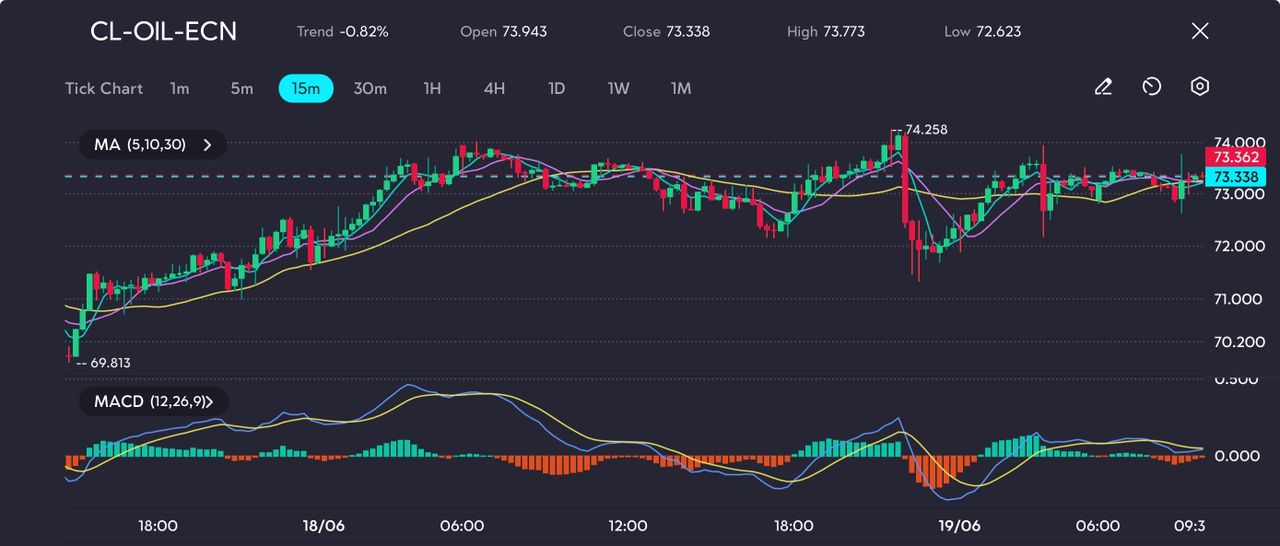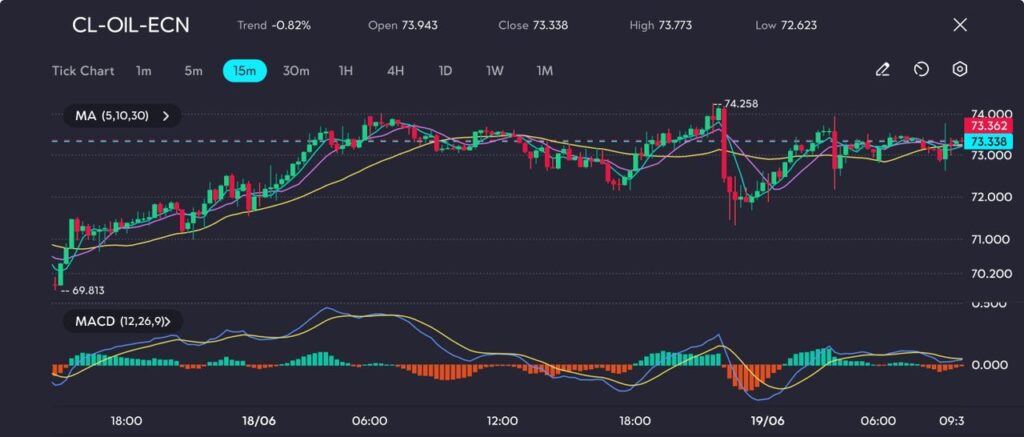Forecasts predict a 50 basis point cut in 2025, along with updated GDP and increased PCE inflation expectations.
Oil Pulls Back As Markets Reassess Middle East Tensions

Crude oil prices dipped on Thursday, with West Texas Intermediate (WTI) futures falling below the $75 per barrel mark. The session ended at $73.33 after reaching a high of $74.26 earlier in the day. This reversal unwound much of the week’s earlier gains, as traders reassessed positions amid unclear signals from Washington regarding potential US involvement in the ongoing Israel-Iran standoff.
On Wednesday, President Trump held high-level discussions with defence and intelligence officials concerning Iran’s nuclear infrastructure. However, the White House did not release a firm statement on possible military action. The lack of clarity saw bullish momentum fade, though oil remained well supported, still trading near five-month highs as the regional conflict entered its seventh day.
The central concern for markets remains the Strait of Hormuz, a narrow but vital corridor that channels roughly 20% of the world’s crude supply. While Iran has yet to make any direct threat against oil exports, even the suggestion of a blockade or retaliatory strike could send prices soaring, given the strait’s critical role in global energy flows.
From a broader economic perspective, the latest update from the Federal Reserve added another layer of nuance. The Fed left interest rates unchanged on Wednesday but projected two rate cuts before the year’s end. This dovish outlook points to potential stimulus in the months ahead, which could support oil demand during the second half of 2025.
Technical Analysis
Over the past day, crude oil rallied sharply from around $67 to a peak of $74.26, then pulled back yet maintained a clear uptrend. The price action broke above the 5-, 10-, and 30‑period MAs in a strong bullish sweep, with the 5‑MA riding well above the longer averages—signalling robust short‑term momentum. A MACD crossover occurred following the breakout, and the histogram extended positive, confirming continued upward momentum.

However, a mild retracement followed the spike, as profit‑taking emerged near the $74 mark. The price briefly retested the 10‑MA (purple) and 30‑MA (yellow), finding support before consolidating just above $73.30. The MACD histogram contracted, yet the MACD lines remain above zero, suggesting that bulls still dominate.
While traders are now pricing in a more accommodative Fed outlook, geopolitical risk continues to dominate near-term sentiment. Should the U.S. take a more active military role, or if Tehran targets energy infrastructure, crude prices could surge past the $75 level again. Until then, the market is likely to remain rangebound, with any shifts in diplomatic or military posture acting as the next trigger.




